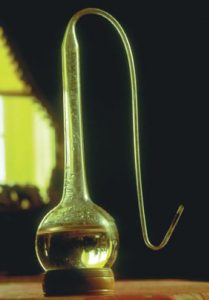History of Microbiology, Important theories and MCQs for GPAT, NEET, SSC, Pharmacist, NET JRF Exam
HISTORY OF MICROBIOLOGY
- During the mid of 1600s, microscope was available and Robert Hooke made some important observations for microorganisms.
- In the year 1674, Anton van Leeuwenhoek made careful observation into the world of microorganisms until his death; he provided descriptions of bacteria, fungi and protozoa.
- After the death of Leeuwenhoek; Carolus Linneus, who was a Swedish botanist developed a general classification of organisms.
- German botanist Schleiden and a German Zoologist Schwann developed cell theory according to which, cells are the smallest basic unit of life.
- In the year 1749, John Needham supported the theory of spontaneous generation after performing an experiment in which raw meat was exposed to hot ashes and there was presence of organisms which were not present initially.
- Lazar Spallanzani disputed the theory of spontaneous generation by boiling the beef and keeping in an air tight sealed container in which o growth or presence of any organisms were noted. Needham proposed this as he put forward the fact that air is essential component for microbes to grow.
- Pasteur worked in mid and late 1800s and through one experiment he completely disproved the theory of spontaneous generation. In that experiment, Pasteur used a very special type of flask which was having a long and narrow gooseneck outlet. Inside this flask, nutrient broth was heated and boiled and after that, air was allowed to passed from that long gooseneck, in which practically, all the microorganisms got settled in the gooseneck itself and no growth was seen in the broth.
Pasteur swan-necked
(The above image is taken only for educational purpose from Microbiology Principles and Explorations by J.G. Black)
- Robert Koch formulated postulates known as Koch’s postulates which states that:
I. There must be a causative agent present in the host suffering from a disease.
II. Disease causing organism can be isolated in pure culture.
III. If the sample of culture of disease causing organism is inoculated in a healthy host, it will produce the same disease.
IV. Disease causing organism can be recovered from the inoculated host animal.
- From the late 1800s, the golden age of microbiology started in which the pathogens for many disease were identified and it helped in halting the epidemics.
- After World War II, antibiotics were discovered, helped in reducing the cases diseases like pneumonia, TB, syphilis, etc.
- In 1940s, electron microscopes were developed which helped in the studies of viruses and between 1950s and 1960s, vaccines against many viral diseases were developed.
- Modern microbiology uses the knowledge of microbiology in development of pharmaceutical products, controlling pathogens in drinking water, controlling the quality of food and dairy products and in industrial applications.
- The knowledge of microbiology is now used in biotechnology in which microorganism are used for producing essential pharmaceuticals, such as human insulin, interferons, vaccines, blood clotting factors and blood dissolving factors which cannot be synthesized from other methods.
MCQs
1. Microscope was made available by the year?
a. 1400s
b. 1500s
c. 1600s
d. 1700s
2. Cell theory was developed by?
a. Schleiden
b. Schwann
c. Both a. and b.
d. Anton van Leeuwenhoek
3. Electron microscope was made available during?
a. 1840s
b. 1900s
c. 1940s
d. 2000s
4. The theory of spontaneous generation was totally disproved by using swan-necked flask by?
a. Lazar Spallanzani
b. John Needham
c. Pasteur
d. Carolus Linneus
5. Which of the following statements are correct related with the cell theory?
I. Cell theory was proposed by Schleiden and Schwann
II. According to cell theory, living organism may generated from the dead material spontaneously.
III. Cell is the basic unit of life.
IV. C. Linneus proposed the cell theory.
a. I, IV
b. III, IV
c. I, II, III
d. I, III
6. Correct sequence for the true/false related with the Koch’s postulates can be?
- There must be a causative agent present in the host suffering from a disease.
- Disease causing organism can be isolated in pure culture.
- If the sample of culture of disease causing organism is inoculated in a healthy host, it will produce the same disease.
- Disease causing organism can be recovered from the inoculated host animal.
a. TTFT
b. FFTF
c. FFFF
d. TTTT
7. Which of the following scientist supported the theory of spontaneous generation?
I. John Needham
II. Franz Schulze
III. John Tyndall
IV. Felix Archimede Pouchet
a. I, IV
b. II, III
c. I, III
d. II. IV
Participate in Online FREE GPAT TEST: CLICK HERE
Participate in Online FREE Pharmacist TEST: CLICK HERE
Participate in Online FREE Drug Inspector TEST: CLICK HERE
ANSWERS
1-c
2-c
3-c
4-c
5-d
6-d
7-a
RFERENCES
[1] Black JG, Black LJ. Microbiology: principles and explorations. John Wiley & Sons; 2018 Jan 4.
